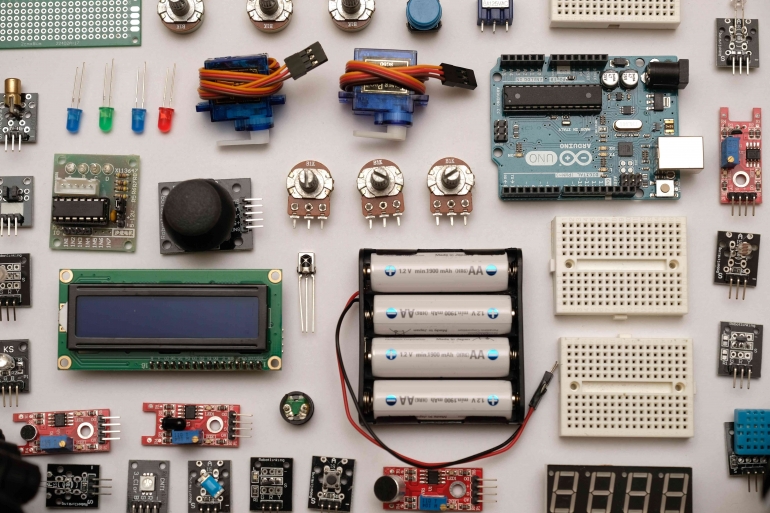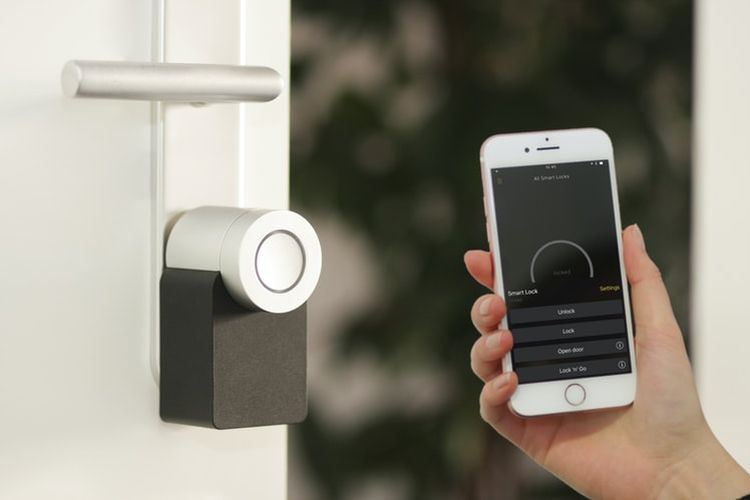Newsletter
Internet of Things refers to a system of devices, interconnected with each other, equipped with computational capacity, enabled to transfer data over a network without requiring human interaction. It is a model of human-machine interaction in which information processing is integrated within everyday objects rather than within individual personal computers [ 1 ].
The term “Internet of Things” was first used in 1999 by Kevin Ashton while explaining the benefits of RFID for goods management. By equipping the goods with special devices, they could “communicate” information of interest (status, traceability, etc.). In this way, “things” and people could provide information about their status and the surrounding world, but in a much more efficient way.
The concept of IoT traces back to the early 2000s, with the vision of connecting everyday objects to the internet to enable remote monitoring, control, and automation. Over the years, IoT has grown exponentially, encompassing a vast array of connected devices, including smartphones, wearables, sensors, actuators, industrial machinery, and smart home appliances. The evolution of IoT is moving beyond individual connected devices to the creation of smart ecosystems where devices, systems, and platforms interact seamlessly to deliver value-added services and experiences.

IoT as a technology area is more than just devices, it includes services to process data. Hence, IoT itself has an architecture or the structure that allows for interconnected devices, cloud services and protocols to create an IoT ecosystem [ 2 ]. It consists of four key layers: Perception/sensing, Connectivity/network, Data processing and User interface/application.
The IoT can be classified into few categories based on its applications, for example:

Nowadays IoT has reached far beyond its designers’ vision and become much more popular for the new applications it opens up in many vital domains like healthcare, intelligent transportation, public safety, home automation, smart city, asset monitoring, industrial automation and much more. The evolution of IoT presented the long-awaited promise of ubiquitous data access in which people wanted to have access to real-time data on the go anywhere and anytime.
Although IoT promises to support intelligence decision making, enable better quality of life to citizens and make transformative changes in their daily lives, there remain grand challenges that hinder IoT from reaching its full potential such as privacy and security concerns, data heterogeneity and device interoperability, unrestricted access control and deployment in the open access domain.
Lastly, a bit deeper dive into the world of IoT, is the components. The two components of an IoT are the Internet and the Thing
The Thing part of IoT refers to a device that can interact with the physical world. These devices are usually small, low-priced computers, running at low speeds and using low power - for example, Microcontroller and Single Board Computer (SBC) [ 6 ]. These devices interact with the physical world, either by using sensors to gather data from their surroundings or by controlling outputs or actuators to make physical changes.
The Internet side of an IoT application consists of applications that the IoT device can connect to send and receive data, as well as other applications that can process the data from the IoT device and help make decisions on what requests to send to the IoT devices actuators. Typically, a handler is needed for security as well as the receiving and sending messages back to the device, that can also connect, process or store sensor data, and to make decisions. For example, there is edge computing and cloud computing.
[ 1 ] H. Kopetz and W. Steiner, “Internet of things,” in Real-time systems: design principles for distributed embedded applications. Springer International Publishing, 2022, pp. 325-341.
[ 2 ] M. Lombardi, F. Pascale, and D. Santaniello, “Internet of things: A general overview between architectures, protocols and applications,” Information, vol. 12, no. 2, p. 87, 2021.
[ 3 ] M. Jha, “Internet of things (IoT),” LinkedIn, Mar. 2023. [Online]. Available: https://www.linkedin.com/pulse/internet-things-iot-maheshwar-jha-hjs0f/. [Accessed: May 11th 2024]
[ 4 ] G. Khatri et al., “Internet of Things (IoT) Applications for Sustainable Development,” Front. Robot. AI, 13 March 2023. [Online]. Available: https://www.frontiersin.org/articles/10.3389/friot.2022.1073780/full. [Accessed: May 11th 2024]
[ 5 ] A. Hovhannisyan, “Unpacking IoT architecture – layers and components explained,” Device Authority, 2023. [Online]. Available: https://deviceauthority.com/unpacking-iot-architecture-layers-and-components-explained/. [Accessed: May 11th 2024]
[ 6 ] “1-getting-started,” GitHub, 2023. [Online]. Available: https://github.com/microsoft/IoT-For-Beginners/tree/main/1-getting-started. [Accessed: May 11th 2024]